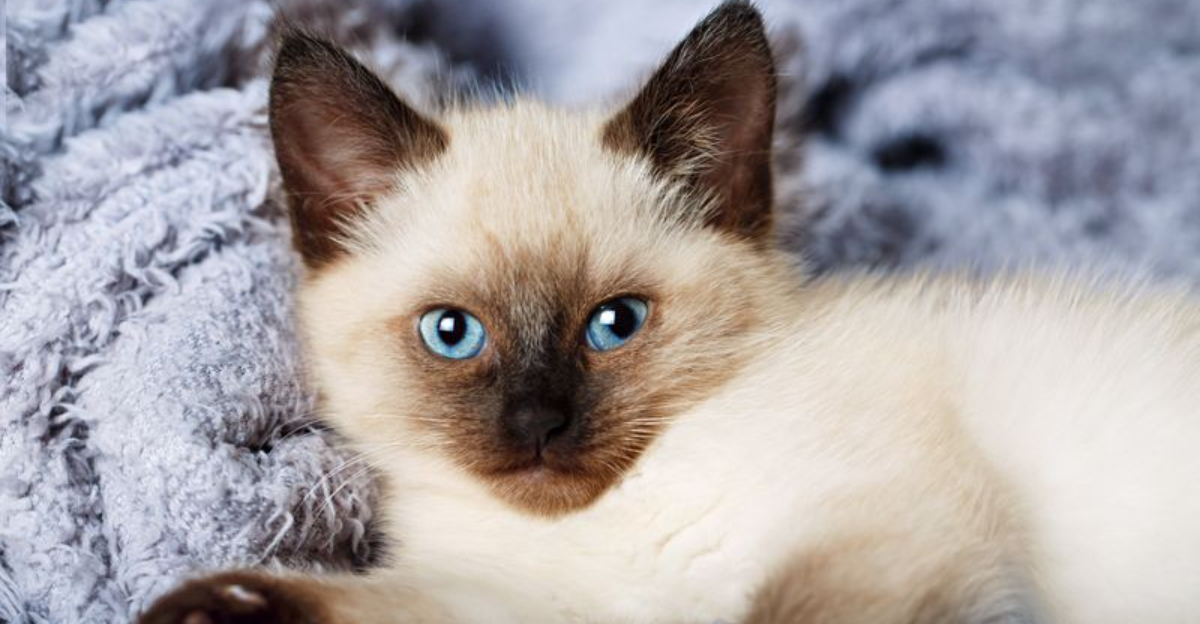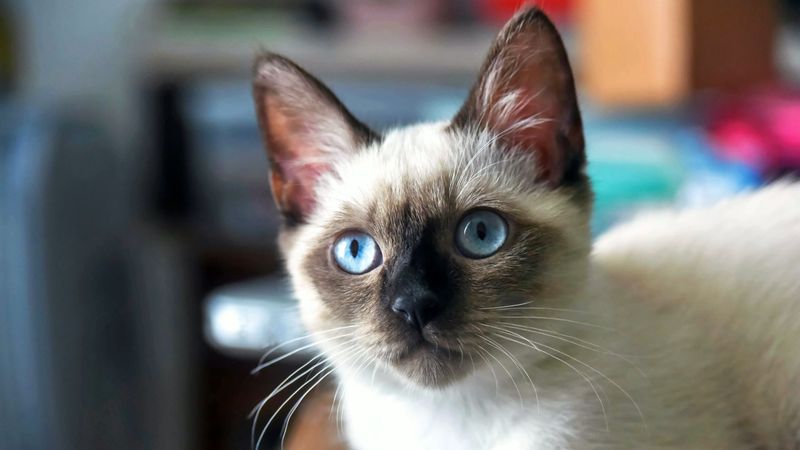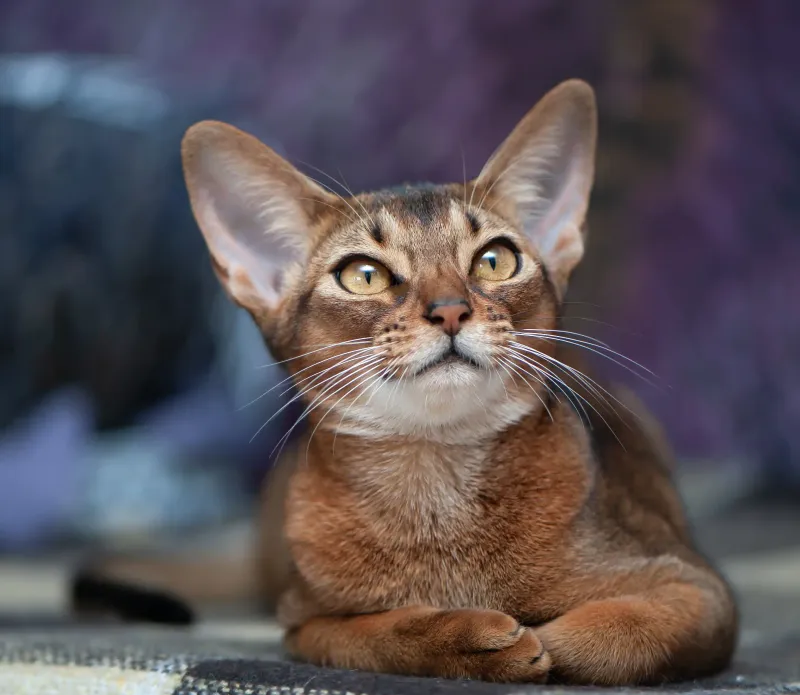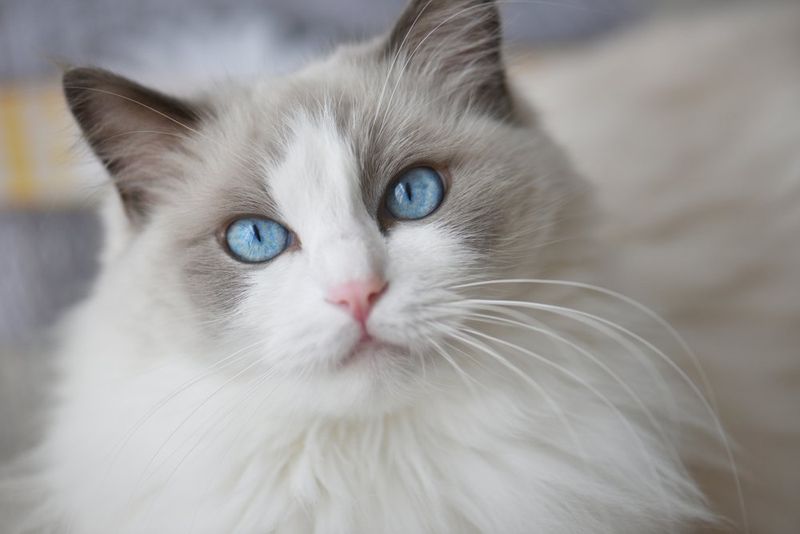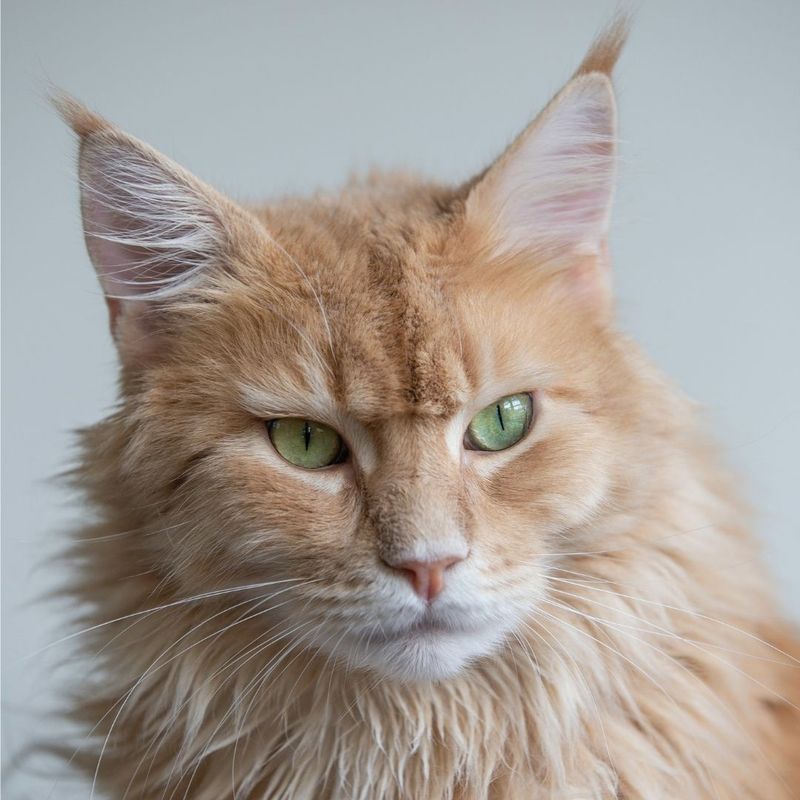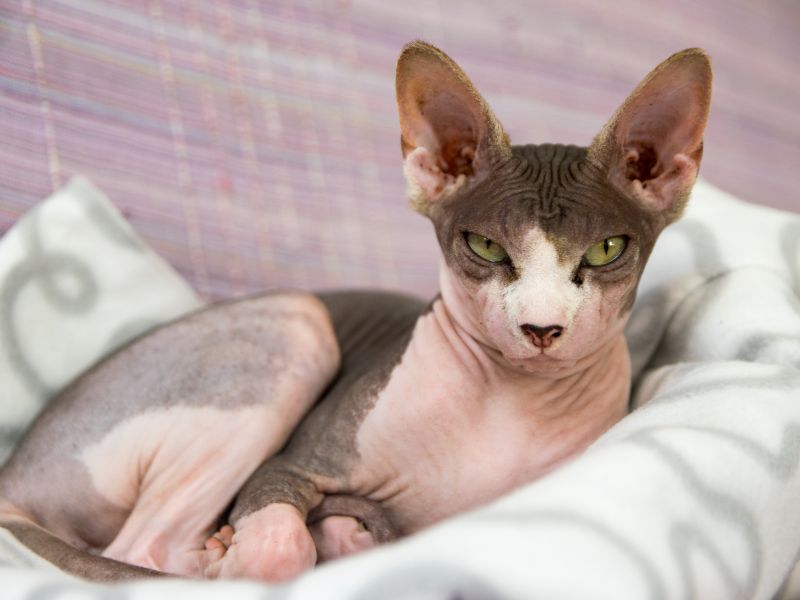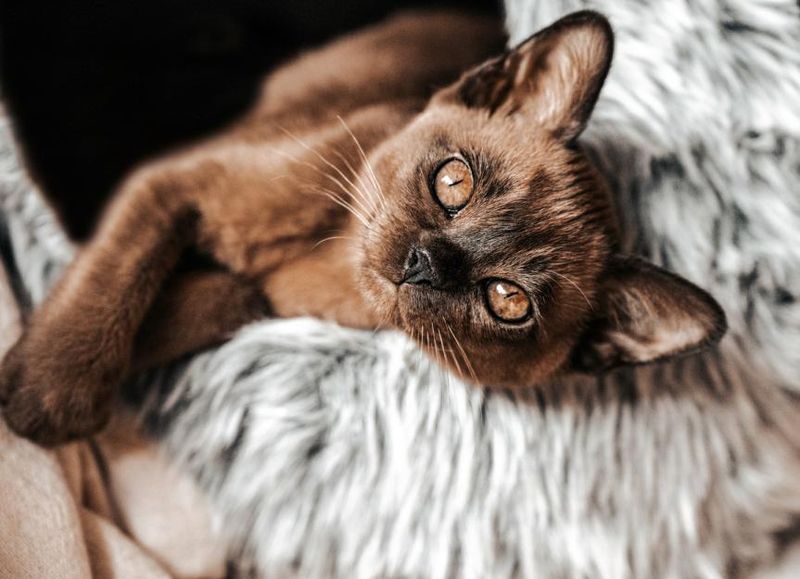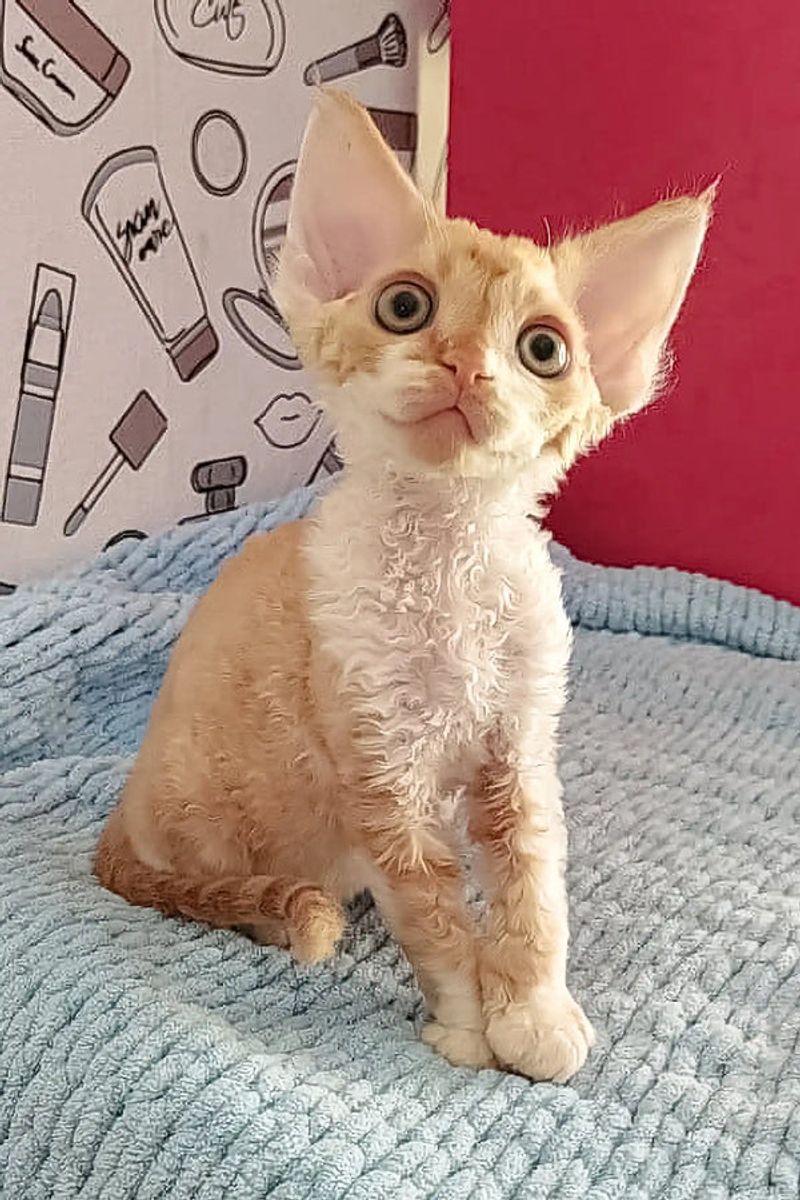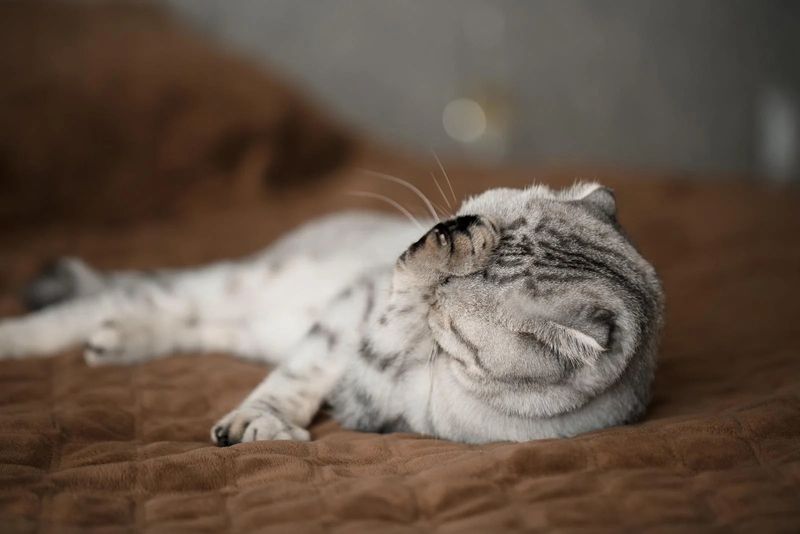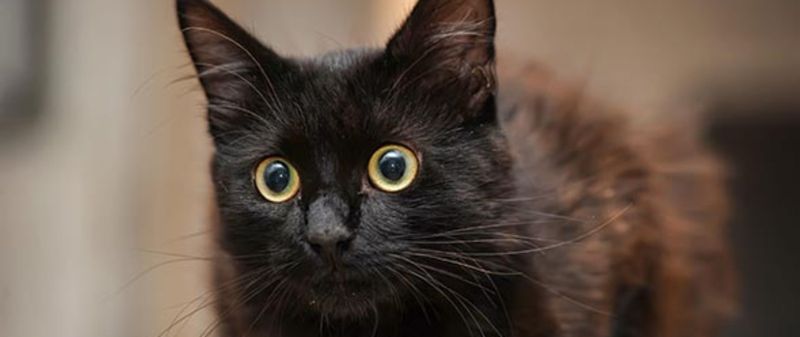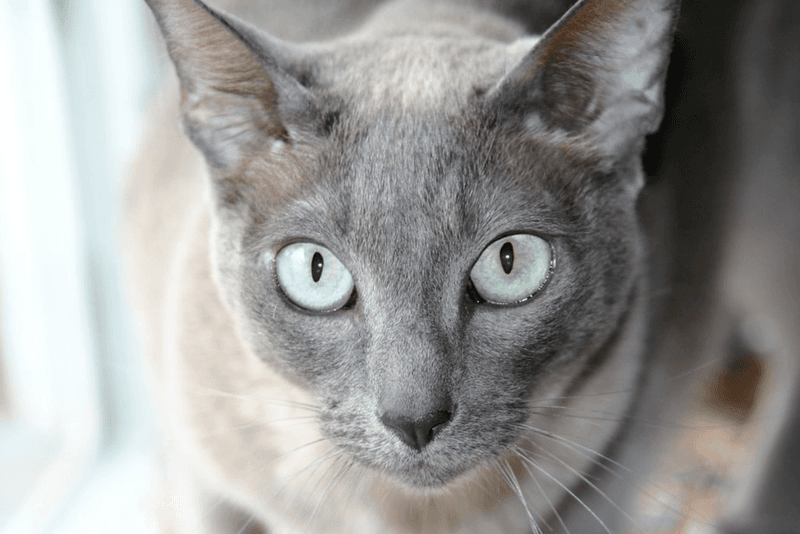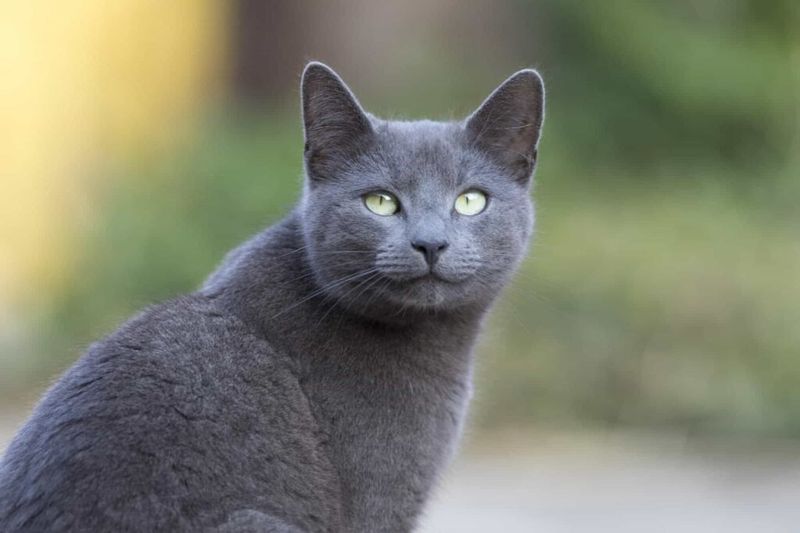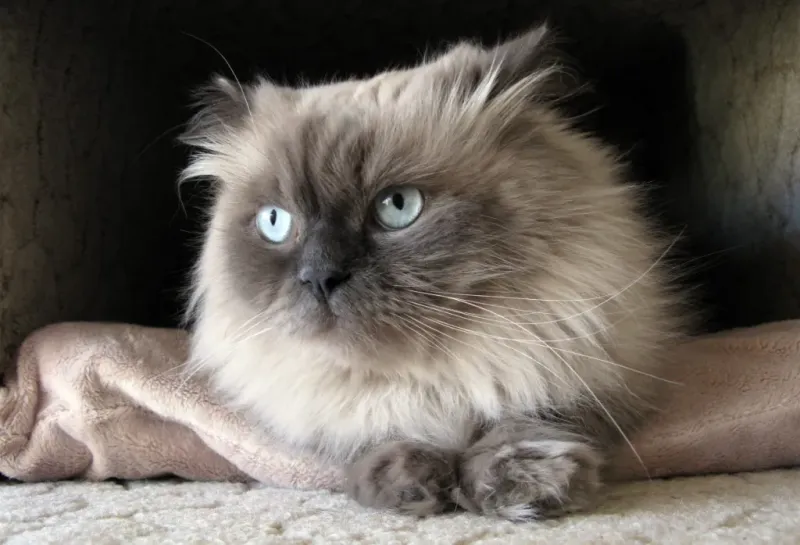📖 Table of Content:
Cats aren’t just aloof creatures lounging in sunbeams. Many breeds experience emotions deeply, forming strong bonds with their humans and reacting intensely to changes in their environment. These sensitive felines might sulk when you’re away too long, celebrate your return with excessive purring, or hold a grudge when you bring out the dreaded nail clippers. Let’s explore the cat breeds that wear their hearts on their furry sleeves.
1. Siamese
Vocal and demanding, Siamese cats express every feeling with loud meows and dramatic body language. They’ll follow you around chattering about their day, demanding responses to their feline monologues.
These blue-eyed beauties form intense bonds with their favorite humans and can become visibly depressed when left alone too long. Their separation anxiety is legendary among cat behaviorists.
Siamese cats hold grudges better than most people. Change their routine, introduce a new pet, or simply buy the wrong brand of cat food, and prepare for the silent treatment – punctuated by accusatory stares that make you question all your life choices.
2. Abyssinian
Abyssinians live life with their emotions turned up to maximum volume. Their expressive eyes telegraph every feeling, from joy to disappointment, making them open books of feline emotion.
When happy, these cats practically vibrate with excitement. Their ticked coats seem to shimmer as they prance around, showing off their latest toy conquest or demanding play time.
Highly sensitive to mood shifts, Abyssinians absorb the emotional atmosphere of your home. Feel stressed? Your Aby will notice first, often attempting to comfort you or alternatively, hiding until the emotional storm passes. Their empathetic nature makes them exceptional emotional support animals.
3. Ragdoll
Named for their tendency to go limp in your arms, Ragdolls may appear soft and passive, yet their emotional awareness is profound. These gentle companions often respond to your feelings with an uncanny sensitivity that rivals human empathy.
Rejection hits Ragdolls hard. Close the bedroom door on them, and those blue eyes will stare at you with such wounded betrayal that you’ll find yourself apologizing to your cat. Many owners report feeling genuinely guilty after setting necessary boundaries.
Despite their sensitivity, Ragdolls rarely hold grudges. They forgive quickly and completely, making them ideal companions for families where occasional chaos is inevitable. Their emotional resilience balances beautifully with their sensitivity.
4. Persian
Behind those squished faces and luxurious coats, Persians hide hearts that bruise easily. They approach life cautiously, preferring to observe before participating in household activities. This reserved nature often masks their deep emotional attachments.
Environmental changes devastate Persians more than most breeds. Moving furniture, having houseguests, or relocating can trigger anxiety behaviors like excessive grooming or hiding. Their need for stability reflects their sensitive inner lives.
Persians remember kindness and slights with equal clarity. Treat them well, and they’ll reward you with devoted companionship. Neglect their emotional needs, and they’ll retreat into dignified aloofness that can take weeks to overcome. Their emotional memory is remarkably long-lasting.
5. Maine Coon
They may strut around like little lions, but Maine Coons are softies at heart. Behind that wildcat façade is a loyal companion who thrives on connection and often grows surprisingly attached to their favorite humans.
Rejection affects Maine Coons profoundly. Owners report these cats showing visible signs of depression if excluded from family activities. Their need for inclusion makes them excellent family cats who want to participate in everything from dinner to homework sessions.
Surprisingly sensitive to criticism, Maine Coons will slink away if scolded too harshly. Their emotional intelligence means they understand tone of voice and facial expressions with uncanny accuracy, responding to subtle emotional cues that other breeds might miss entirely.
6. Sphynx
Without fur to hide behind, Sphynx cats seem emotionally naked too. Their wrinkled faces display every feeling with cartoon-like expressiveness, making them impossible to misread. Joy, anxiety, and curiosity all play across their features with theatrical clarity.
Physical contact matters enormously to these hairless cats. A Sphynx denied cuddles will follow you with pathetic persistence, sometimes pawing at your leg or climbing your body to reach your shoulders. Their need for warmth is both physical and emotional.
Sphynx cats form bonds so intense they’ve been known to become visibly depressed when their favorite person travels. They’ll wait by doors, sleep on recently worn clothing, and greet returning owners with dramatic displays of relief and happiness that put dogs’ welcomes to shame.
7. Burmese
To be loved by a Burmese is to be truly seen. These so-called “velcro cats” cling not just to your side, but to your heart, forming emotional ties that run deeper than most other feline companions.
Routine matters deeply to the sensitive Burmese. Changes to feeding times, play sessions, or sleeping arrangements can trigger anxiety behaviors like excessive vocalization or clinginess. Their need for predictability reflects their emotional sensitivity.
Burmese respond dramatically to positive attention. A simple compliment or gentle scratch can send them into purring ecstasy, while being ignored might prompt them to perform increasingly elaborate antics to regain your focus. Few cats work harder to maintain their emotional connection with their humans.
8. Devon Rex
Devon Rex cats approach life with their hearts fully exposed. Their elf-like appearance with large ears and wavy coats matches their whimsical emotional nature – they experience joy, fear, and love with fairy-tale intensity.
Social rejection devastates Devon Rex cats. Exclude them from gatherings, and they’ll perch nearby with such forlorn expressions that guests often ask what’s wrong with your cat. Their need for inclusion borders on comical desperation.
Devon Rex cats form emotional attachments to specific objects, often carrying favorite toys everywhere or becoming distressed if their special blanket gets washed. This emotional connection to possessions reveals their sensitive inner lives and capacity for forming deep attachments beyond just human relationships.
9. Scottish Fold
They may look like they’re fretting about the state of the world, but Scottish Folds aren’t just cute little worriers. Their emotional radar is spot-on—they’ll often curl up beside you the moment they sense your mood dip.
Conflict affects Scottish Folds deeply. Raised voices or tension between family members can send them hiding under beds or into closets until harmony returns. Their aversion to discord makes them excellent barometers of household emotional health.
Scottish Folds remember emotional experiences vividly. A negative vet visit might make them wary of carriers for months, while a positive encounter with a visitor could create an instant friendship. Their emotional memory shapes their behavior in ways that surprise even experienced cat owners.
10. Cornish Rex
With energy that never quits, Cornish Rex cats express emotions as boldly as they move. Happiness sends them racing around the room, while disappointment brings out dramatic flops and vocal protests that make their feelings crystal clear.
Temperature affects Cornish Rex emotions dramatically. Their thin coats make them physically sensitive to cold, but this discomfort quickly transforms into emotional distress. A chilly Cornish Rex becomes clingy and vocal until warmth is restored.
Cornish Rex cats form intense but balanced emotional attachments. While devoted to their humans, they typically handle short separations better than some other sensitive breeds. This emotional resilience makes them good companions for people with moderate work schedules who still want a deeply connected feline relationship.
11. Bombay
Bombay cats combine emotional intensity with remarkable patience. These mini-panthers form deep attachments to their humans but express their feelings through quiet presence rather than demanding behaviors. Their subtle emotional style sometimes masks their sensitivity.
Bombays take environmental changes personally. Rearranging furniture or bringing new items home might trigger suspicious behavior as they process these perceived betrayals of the status quo. Their need for explanation and reassurance during transitions reveals their emotional depth.
These sleek black cats remember kindness indefinitely. A Bombay who’s been treated gently will remain loyal through major life changes, moving homes, or new family additions. Their emotional memory creates foundations for lifelong bonds that withstand significant challenges.
12. Tonkinese
If cats could speak in color, the Tonkinese would be a living rainbow. With the Siamese’s expressive chatter and the Burmese’s deep emotional bonds, they bring passion and presence to every interaction.
Praise matters enormously to Tonkinese cats. They bloom under positive attention, performing tricks and social behaviors that earn compliments. Conversely, feeling ignored can trigger attention-seeking behaviors ranging from charming to mildly destructive.
Tonkinese form hierarchical emotional attachments within households. While loving toward all family members, most choose a primary person who receives their deepest devotion. This selected human often finds themselves followed even to the bathroom, as the cat’s anxiety about separation overrides respect for privacy.
13. Balinese
Think of Balinese cats as furry performers—singing like Siamese and moving with the grace of dancers. Their emotions come alive in every step, stretch, and chirp, making them captivating companions.
Emotional neglect impacts Balinese cats severely. They require regular interaction and play, becoming visibly depressed when social needs go unmet. Their expressive blue eyes can reflect sadness with heartbreaking clarity that motivates even busy owners to make time for them.
Balinese cats display emotional contagion, picking up and reflecting their owners’ moods. Living with a Balinese means having an emotional mirror that celebrates your joys and commiserates with your sorrows, sometimes before you’ve fully recognized your feelings yourself.
14. Russian Blue
Russian Blues hide sensitive souls behind reserved exteriors. Initially shy with strangers, these silver-coated cats reveal their emotional depth only to trusted companions, making their eventual devotion all the more meaningful.
Changes to household composition affect Russian Blues profoundly. New pets, babies, or roommates can trigger anxiety behaviors like excessive grooming or hiding. Their need for gradual introductions reflects their emotional caution and deep attachment to established relationships.
Russian Blues remember emotional wounds with remarkable clarity. A single frightening experience can create lasting wariness, while positive associations build equally enduring comfort. This emotional memory makes them somewhat challenging to rehabilitate if adopted from difficult circumstances, but extraordinarily loyal once they form positive attachments.
15. Himalayan
Wrapped in plush coats and quiet grace, Himalayans feel deeply but express it softly. With Persian sensitivity and Siamese soul, they reveal their emotions in small, meaningful ways—often noticed only by those who truly know them.
Environmental stability matters tremendously to Himalayans. Home renovations, frequent visitors, or chaotic households can overwhelm their sensitive natures, causing stress-related health issues. Their emotional well-being depends on predictable routines and peaceful surroundings.
Himalayans develop strong preferences about people, forming deep attachments to some while merely tolerating others. Their emotional selectivity can seem snobbish but actually reflects genuine sensitivity to how different humans interact with them. A person who respects their boundaries will eventually be rewarded with devoted affection.
